RODO, czyli Ogólne Rozporządzenie o Ochronie Danych, to prawo Unii Europejskiej chroniące prywatność użytkowników podczas korzystania ze stron internetowych.
Otrzymaliśmy dziesiątki e-maili od użytkowników z prośbą o wyjaśnienie RODO prostym językiem i podzielenie się wskazówkami, jak sprawić, aby Twoja witryna WordPress była zgodna z RODO.
W tym artykule wyjaśnimy wszystko, co musisz wiedzieć o RODO i WordPressie (bez skomplikowanych prawnych zawiłości).
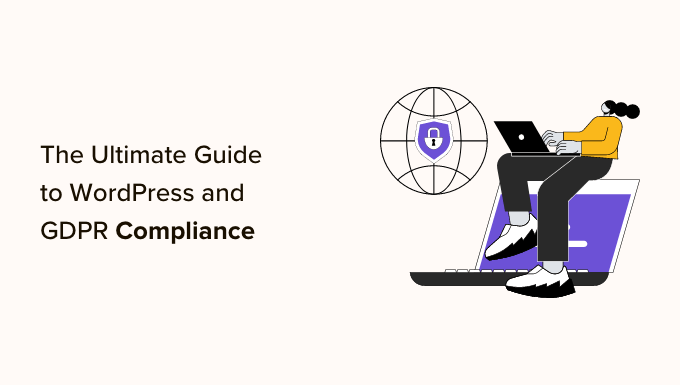
Zastrzeżenie
Nie jesteśmy prawnikami i nic na tej stronie nie powinno być traktowane jako porada prawna.
Aby ułatwić Ci nawigację po naszym obszernym przewodniku po zgodności WordPress i RODO, poniżej przygotowaliśmy spis treści:
- Czym jest RODO?
- Czy RODO dotyczy mojej strony WordPress?
- Czego wymaga się od właścicieli stron internetowych na mocy RODO?
- Czy WordPress jest zgodny z RODO?
- Dodatkowe obszary na Twojej stronie internetowej do sprawdzenia pod kątem zgodności z RODO
- Najlepsze wtyczki WordPress do zgodności z RODO
- Końcowe przemyślenia
- Eksperckie poradniki dotyczące zapewnienia zgodności Twojej witryny WordPress z RODO
- Dodatkowe zasoby
Czym jest RODO?
Ogólne rozporządzenie o ochronie danych (RODO) to prawo Unii Europejskiej (UE), które weszło w życie 25 maja 2018 r. Celem RODO jest zapewnienie obywatelom UE kontroli nad ich danymi osobowymi i zmiana podejścia organizacji na całym świecie do prywatności danych.
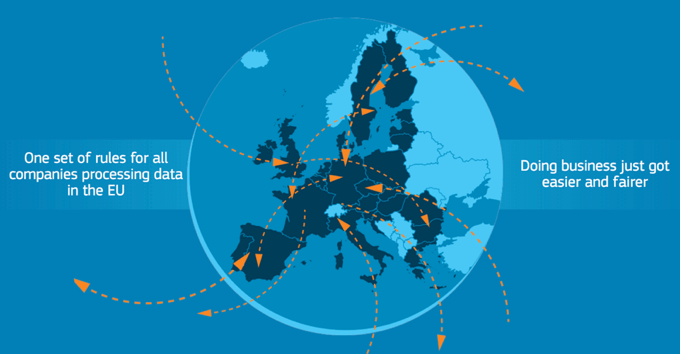
Na przestrzeni lat prawdopodobnie otrzymywałeś dziesiątki e-maili od firm takich jak Google na temat RODO, ich nowych polityk prywatności i wielu innych kwestii prawnych. Dzieje się tak, ponieważ UE nałożyła wysokie kary na osoby, które nie przestrzegają przepisów.
Firmy, które nie przestrzegają wymogów RODO, mogą zostać obciążone wysokimi grzywnami w wysokości do 4% rocznych globalnych przychodów firmy lub 20 milionów euro (w zależności od tego, która kwota jest wyższa). To wystarczający powód, aby wywołać powszechną panikę wśród firm na całym świecie.
Czym jest CCPA?
Stan Kalifornia wprowadził podobne przepisy dotyczące prywatności 1 stycznia 2020 r., chociaż potencjalne kary są znacznie niższe.
California Consumer Privacy Act (CCPA) ma na celu ochronę danych osobowych mieszkańców Kalifornii. Daje im prawo do wiedzy, jakie dane osobowe są o nich zbierane, żądania ich usunięcia i rezygnacji ze sprzedaży ich danych.
W tym artykule skupimy się na RODO, ale wiele z wymienionych kroków pomoże Ci również uzyskać zgodność z CCPA.
To prowadzi nas do wielkiego pytania, o którym możesz myśleć:
Czy RODO dotyczy mojej strony WordPress?
Odpowiedź brzmi TAK. Dotyczy to każdego biznesu, dużego i małego, na całym świecie (nie tylko w Unii Europejskiej).
Jeśli Twoja strona internetowa WordPress ma odwiedzających z krajów Unii Europejskiej, to prawo dotyczy Ciebie.
Ale nie panikuj. To nie koniec świata.
Chociaż RODO może eskalować do tak wysokich kar, zacznie się od ostrzeżenia, następnie nagany, a potem zawieszenia przetwarzania danych.
I dopiero jeśli będziesz nadal łamać prawo, nałożone zostaną wysokie kary.
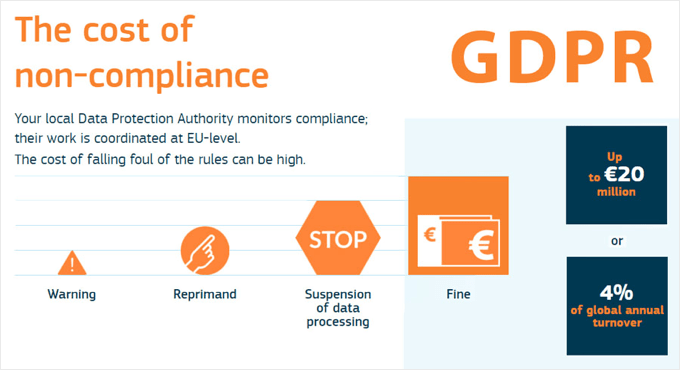
UE nie jest jakimś złym rządem, który chce Cię dopaść. Jej celem jest ochrona niewinnych konsumentów przed lekkomyślnym obchodzeniem się z danymi, które mogłoby doprowadzić do naruszenia ich prywatności.
Naszym zdaniem maksymalna grzywna ma na celu przede wszystkim zwrócenie uwagi dużych firm, takich jak Facebook i Google, aby rozporządzenie NIE zostało zignorowane. Ponadto zachęca to firmy do faktycznego położenia większego nacisku na ochronę praw ludzi.
Gdy zrozumiesz, czego wymaga RODO i ducha prawa, zdasz sobie sprawę, że nic z tego nie jest zbyt szalone.
Podzielimy się również narzędziami i wskazówkami, aby Twoja strona WordPress była zgodna z RODO.
Czego wymaga się od właścicieli stron internetowych na mocy RODO?
Celem RODO jest ochrona danych osobowych użytkowników (PII) i podniesienie standardów dla firm w zakresie sposobu gromadzenia, przechowywania i wykorzystywania tych danych.
Te dane osobowe obejmują nazwy użytkowników, adresy e-mail, adresy fizyczne, adresy IP, informacje o zdrowiu, dochody i inne.
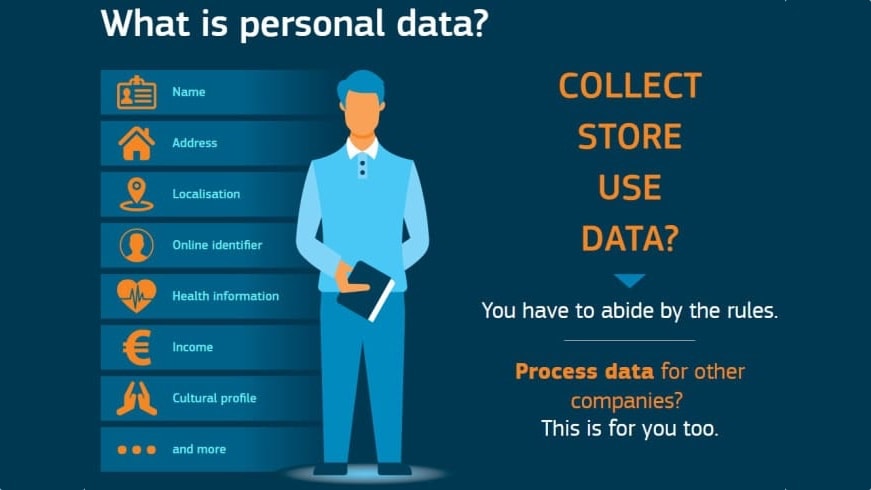
Chociaż rozporządzenie RODO ma 200 stron, oto najważniejsze filary, o których musisz wiedzieć:
Musisz uzyskać wyraźną zgodę na zbieranie danych osobowych
Jeśli zbierasz dane osobowe od mieszkańca UE, musisz uzyskać wyraźną, szczegółową i jednoznaczną zgodę lub pozwolenie.
Innymi słowy, nie możesz po prostu wysyłać niechcianych e-maili do kogoś, kto dał Ci swoją wizytówkę lub wypełnił formularz kontaktowy na Twojej stronie internetowej. To jest spam. Zamiast tego musisz pozwolić im na zapisanie się do Twojego newslettera marketingowego.
Aby można było uznać zgodę za wyraźną, należy wymagać aktywnego działania użytkownika (positive opt-in). Pole wyboru nie może być zaznaczone domyślnie, musi zawierać jasne sformułowanie (bez prawniczego żargonu) i musi być oddzielone od innych warunków i postanowień.
Twoi użytkownicy mają prawo do swoich danych osobowych
Musisz poinformować osoby, gdzie, dlaczego i jak ich dane są przetwarzane i przechowywane.
Osoba fizyczna ma prawo do pobrania swoich danych osobowych oraz prawo do bycia zapomnianym.
Oznacza to, że mają prawo żądać usunięcia ich danych osobowych. Kiedy użytkownik klika link rezygnacji z subskrypcji lub prosi Cię o usunięcie swojego profilu, faktycznie musisz to zrobić.
Musisz zapewnić natychmiastowe powiadomienia o naruszeniu danych
Organizacje muszą zgłaszać określone rodzaje naruszeń danych odpowiednim organom w ciągu 72 godzin, chyba że naruszenie zostanie uznane za niegroźne i nie stanowi ryzyka dla danych osobowych.
Jednakże, jeśli naruszenie jest wysokiego ryzyka, firma musi również natychmiast poinformować osoby, których dotyczy.
To mam nadzieję zapobiegnie tuszowaniu spraw, jak w przypadku Yahoo, które nie zostały ujawnione aż do przejęcia.
Możesz potrzebować wyznaczyć Inspektora Ochrony Danych
Jeśli jesteś spółką publiczną lub przetwarzasz duże ilości danych osobowych, musisz wyznaczyć inspektora ochrony danych.
Nie jest to wymagane dla małych firm. W razie wątpliwości skonsultuj się z prawnikiem.
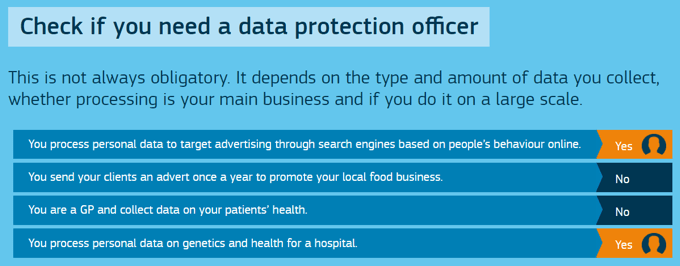
Podsumowanie w prostych słowach tego, co jest wymagane
Mówiąc prościej, RODO zapewnia, że firmy nie mogą spamować ludzi, wysyłając im e-maile, o które nie prosili. Firmy nie mogą również sprzedawać danych ludzi bez ich wyraźnej zgody.
Firmy muszą usuwać konta użytkowników i wypisywać ich z list e-mailowych na żądanie. Firmy muszą również zgłaszać naruszenia danych i ogólnie lepiej dbać o ochronę danych.
Brzmi całkiem nieźle, przynajmniej w teorii.
Ale prawdopodobnie zastanawiasz się, co musisz zrobić, aby upewnić się, że Twoja witryna WordPress jest zgodna z RODO.
Cóż, to naprawdę zależy od Twojej konkretnej strony internetowej (więcej na ten temat później).
Zacznijmy od odpowiedzi na największe pytanie, które otrzymaliśmy od użytkowników:
Czy WordPress jest zgodny z RODO?
Tak, podstawowe oprogramowanie WordPress jest zgodne z RODO od wersji WordPress 4.9.6, która została wydana 17 maja 2018 r. W celu osiągnięcia tego celu dodano kilka ulepszeń RODO.
Ważne jest, aby pamiętać, że mówiąc o WordPressie, mamy na myśli WordPress.org hostowany samodzielnie. Różni się to od WordPress.com, a różnicę możesz poznać w naszym przewodniku na temat WordPress.com vs WordPress.org.
Niemniej jednak, ze względu na dynamiczny charakter stron internetowych, żadna pojedyncza platforma, wtyczka ani rozwiązanie nie może zapewnić 100% zgodności z RODO. Proces zgodności z RODO będzie się różnić w zależności od typu posiadanej strony internetowej, przechowywanych danych i sposobu ich przetwarzania na stronie.
Ok, więc możesz sobie pomyśleć, co to oznacza prostym językiem?
Domyślnie WordPress jest wyposażony w następujące narzędzia usprawniające RODO:
Pole zgody na komentarze
Przed majem 2018 roku WordPress domyślnie przechowywał imię, adres e-mail i stronę internetową komentującego jako plik cookie w przeglądarce użytkownika. Ułatwiło to użytkownikom pozostawianie komentarzy na ich ulubionych blogach, ponieważ pola te były wstępnie wypełnione.
Ze względu na wymóg zgody w RODO, WordPress dodał pole wyboru zgody do formularza komentarzy.

Użytkownik może zostawić komentarz bez zaznaczania tego pola. Będzie jednak musiał ręcznie wpisywać swoje imię, adres e-mail i stronę internetową za każdym razem, gdy to zrobi.
Wskazówka: Upewnij się, że jesteś wylogowany podczas testowania, aby sprawdzić, czy pole wyboru jest widoczne.
Jeśli pole wyboru nadal się nie wyświetla, Twoja wtyczka prawdopodobnie nadpisuje domyślny formularz komentarzy WordPress. Oto przewodnik krok po kroku, jak dodać pole wyboru prywatności komentarzy RODO w swoim motywie WordPress.
Funkcje eksportu i usuwania danych osobowych
WordPress oferuje właścicielom witryn narzędzia potrzebne do przestrzegania wymogów RODO dotyczących obsługi danych oraz do honorowania próśb użytkowników o eksportowanie danych osobowych, a także o usunięcie danych osobowych użytkowników.
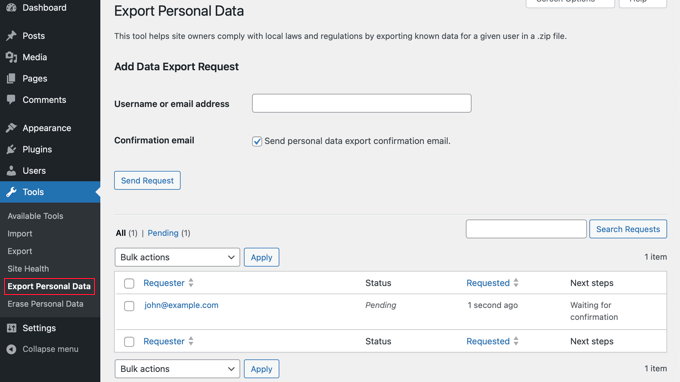
Funkcje obsługi danych można znaleźć w menu Narzędzia w panelu administracyjnym WordPress. Stąd możesz przejść do Eksportuj dane osobowe lub Usuń dane osobowe.
Generator Polityki Prywatności
WordPress posiada wbudowany generator polityki prywatności. Zawiera gotowy szablon polityki prywatności i oferuje wskazówki, co jeszcze dodać. Pomaga to być bardziej przejrzystym wobec użytkowników w kwestii tego, jakie dane przechowujesz i jak nimi zarządzasz.
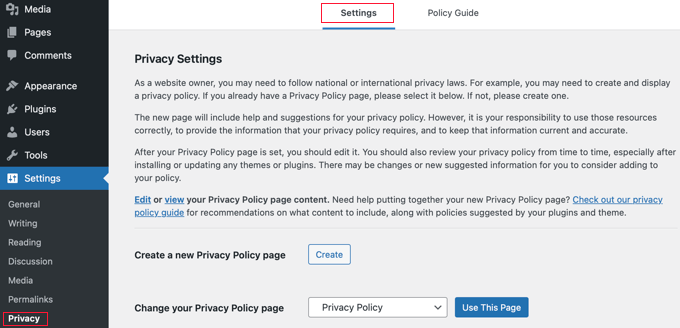
Więcej informacji znajdziesz w naszym przewodniku jak utworzyć politykę prywatności w WordPress.
Te trzy funkcje wystarczą, aby domyślny blog WordPress był zgodny z RODO. Jednak Twoja witryna prawdopodobnie będzie miała dodatkowe obszary, które również będą musiały być zgodne.
Dodatkowe obszary na Twojej stronie internetowej do sprawdzenia pod kątem zgodności z RODO
Jako właściciel witryny możesz używać różnych wtyczek WordPress, które przechowują lub przetwarzają dane, a mogą one wpłynąć na Twoją zgodność z RODO. Typowe przykłady obejmują:
W zależności od używanych wtyczek WordPress na Twojej stronie, będziesz musiał podjąć odpowiednie działania, aby upewnić się, że Twoja strona jest zgodna z RODO.
Wiele z najlepszych wtyczek WordPress dodało funkcje zgodności z RODO. Przyjrzyjmy się kilku powszechnym obszarom, które będziesz musiał uwzględnić.
Google Analytics
Podobnie jak większość właścicieli stron internetowych, prawdopodobnie korzystasz z Google Analytics, aby uzyskać statystyki strony. Oznacza to, że możesz zbierać lub śledzić dane osobowe, takie jak adresy IP, identyfikatory użytkowników, pliki cookie i inne dane do profilowania zachowań.
Aby być zgodnym z RODO, musisz zrobić jedną z poniższych rzeczy:
- Anonimizuj dane przed rozpoczęciem przechowywania i przetwarzania.
- Dodaj nakładkę, która informuje o plikach cookie i prosi użytkowników o zgodę przed śledzeniem.
Oba te rzeczy są dość trudne do wykonania, jeśli ręcznie wklejasz kod Google Analytics na swojej stronie. Jednak jeśli używasz MonsterInsights, najpopularniejszego wtyczki Google Analytics dla WordPress, to masz szczęście.
Wydali dodatek zgodności z RODO, który pomaga zautomatyzować powyższy proces.

MonsterInsights ma również bardzo dobry wpis na blogu omawiający RODO i Google Analytics. Jest to pozycja obowiązkowa, jeśli korzystasz z Google Analytics na swojej stronie.
Formularze kontaktowe
Jeśli używasz formularza kontaktowego w WordPress, być może będziesz musiał dodać dodatkowe środki ostrożności. Jest to szczególnie ważne, jeśli przechowujesz wpisy z formularza lub wykorzystujesz dane do celów marketingowych .
Oto kilka rzeczy do rozważenia podczas zapewniania zgodności formularzy WordPress z RODO:
- Uzyskaj wyraźną zgodę użytkowników na przechowywanie ich informacji.
- Uzyskaj wyraźną zgodę od użytkowników, jeśli planujesz wykorzystywać ich dane do celów marketingowych, takich jak dodawanie ich do Twojej listy e-mailowej.
- Wyłącz śledzenie plików cookie, agenta użytkownika i adresu IP dla formularzy.
- Spełniaj żądania usunięcia danych.
- Jeśli korzystasz z rozwiązania do formularzy SaaS, upewnij się, że masz umowę o przetwarzaniu danych z dostawcami formularzy.
Dobra wiadomość jest taka, że nie musisz organizować umowy o przetwarzanie danych, jeśli korzystasz z wtyczki WordPress, takiej jak WPForms, Gravity Forms lub Ninja Forms.
Te wtyczki przechowują wpisy z formularzy w Twojej bazie danych WordPress, więc aby zachować zgodność z RODO, wystarczy dodać pole wyboru zgody z jasnym wyjaśnieniem.
WPForms, wtyczka formularza kontaktowego, której używamy na WPBeginner, ma kilka ulepszeń RODO, które ułatwiają dodanie pola zgody RODO, wyłączenie plików cookie użytkowników, wyłączenie zbierania adresów IP użytkowników i wyłączenie wpisów jednym kliknięciem.
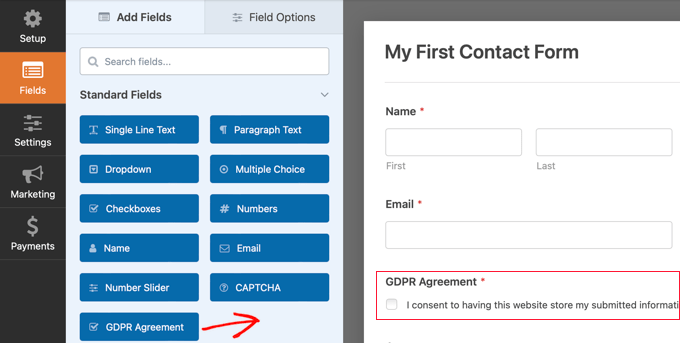
Możesz zapoznać się z naszym przewodnikiem krok po kroku na temat tworzenia formularzy zgodnych z RODO w WordPressie.
Formularze zapisu do newslettera
Podobnie jak w przypadku formularzy kontaktowych, jeśli masz formularze zapisu do marketingowych list e-mail, takie jak wyskakujące okienka, pływające paski, formularze wbudowane i inne, musisz upewnić się, że uzyskasz wyraźną zgodę od użytkowników przed dodaniem ich do swojej listy.
Można to zrobić poprzez:
- Dodaj pole wyboru, które użytkownik musi zaznaczyć przed wyrażeniem zgody.
- Po prostu wymagaj podwójnego potwierdzenia swojej listy e-mailowej.
Najlepsze rozwiązania do generowania leadów, takie jak OptinMonster, dodały pola wyboru zgody RODO i inne niezbędne funkcje, które pomogą Ci zapewnić zgodność formularzy zapisu do newslettera.
Więcej o strategiach RODO dla marketerów można przeczytać na blogu OptinMonster.
Sklepy eCommerce i WooCommerce
Jeśli korzystasz z WooCommerce, najpopularniejszej wtyczki e-commerce dla WordPress, musisz upewnić się, że Twoja strona internetowa jest zgodna z RODO.
Na szczęście zespół MonsterInsights przygotował szczegółowy przewodnik na temat tego, jak sprawić, by sklep WooCommerce był zgodny z RODO.
Reklamy remarketingowe
Jeśli Twoja strona internetowa korzysta z pikseli remarketingowych lub reklam remarketingowych, będziesz musiał uzyskać zgodę użytkownika.
Możesz to zrobić, korzystając z wtyczki takiej jak WPConsent. Blokuje ona wszystkie skrypty śledzące, dopóki użytkownicy nie wyrażą zgody, w przeciwieństwie do podstawowych powiadomień o plikach cookie, które tylko wyświetlają ostrzeżenie.
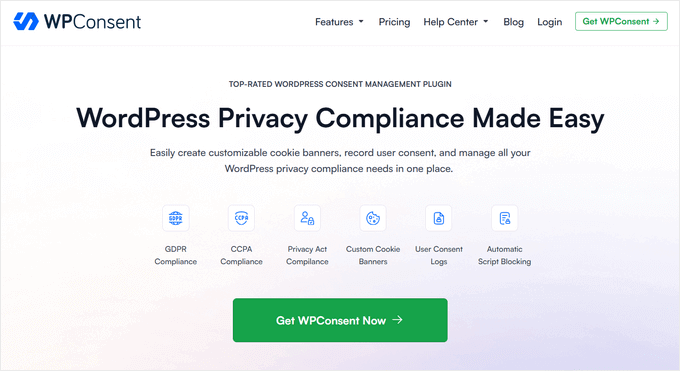
Wtyczka obsługuje popularne usługi, takie jak Google Analytics i Facebook Pixel, jednocześnie przechowując szczegółowe zapisy zgód, dzięki czemu możesz prowadzić kampanie marketingowe, wiedząc, że jesteś w pełni zgodny.
Szczegółowe instrukcje znajdziesz w naszym przewodniku na temat dodawania wyskakującego okienka z informacją o cookies w WordPressie dla RODO/CCPA.
Czcionki Google
Google Fonts to świetny sposób na dostosowanie typografii na Twojej stronie WordPress.
Jednakże stwierdzono, że Google Fonts narusza przepisy RODO. Dzieje się tak, ponieważ Google rejestruje adres IP odwiedzającego za każdym razem, gdy ładowana jest czcionka.
Na szczęście istnieje kilka sposobów, aby sobie z tym poradzić, aby Twoja witryna była zgodna z RODO. Na przykład możesz ładować czcionki lokalnie, zastąpić Google Fonts inną opcją lub je wyłączyć.
Dowiesz się, jak to zrobić, w naszym przewodniku jak sprawić, by czcionki Google były przyjazne dla prywatności.
Najlepsze wtyczki WordPress do zgodności z RODO
Istnieje kilka wtyczek WordPress, które mogą pomóc w automatyzacji niektórych części zgodności z RODO.
Jednak żaden wtyczka nie może zapewnić 100% zgodności ze względu na dynamiczny charakter stron internetowych.
Uważaj na wszelkie wtyczki WordPress, które twierdzą, że oferują 100% zgodności z RODO. Prawdopodobnie nie wiedzą, o czym mówią, i najlepiej ich całkowicie unikać.
Poniżej znajduje się nasza lista zalecanych wtyczek do zgodności z RODO:
- WPConsent automatycznie blokuje wszystkie skrypty śledzące, dopóki odwiedzający nie wyrażą zgody, prowadzi szczegółowe rejestry zgód użytkowników i zawiera łatwe do dostosowania banery prywatności, aby Twoja witryna była zgodna. Dostępna jest również bezpłatna wersja WPConsent.
- Jeśli korzystasz z Google Analytics, zalecamy użycie MonsterInsights i włączenie ich dodatku zgodności z przepisami UE.
- WPForms to najłatwiejszy w użyciu wtyczka formularza kontaktowego WordPress, oferująca pola RODO, funkcję automatycznego usuwania starych wpisów i inne narzędzia prywatności.
- Cookie Notice to popularna darmowa wtyczka do dodawania powiadomienia o ciasteczkach zgodnego z UE, która dobrze integruje się z najlepszymi wtyczkami, takimi jak MonsterInsights i innymi.
- GDPR Cookie Consent pozwala na utworzenie paska powiadomień na Twojej stronie, dzięki czemu użytkownik może zdecydować, czy zaakceptować czy odrzucić pliki cookie, i obejmuje zarówno CCPA, jak i GDPR.
- WP Frontend Delete Account to darmowy plugin, który pozwala użytkownikom automatycznie usunąć swój profil na Twojej stronie.
- OptinMonster to zaawansowane oprogramowanie do generowania leadów, które oferuje inteligentne funkcje targetowania w celu zwiększenia konwersji, jednocześnie będąc zgodnym z RODO.
- PushEngage pozwala na wysyłanie ukierunkowanych wiadomości push do odwiedzających po opuszczeniu Twojej witryny i jest w pełni zgodny z RODO.
- Smash Balloon zapewnia zgodny z RODO sposób osadzania kanałów na żywo i wyświetlania postów z Facebooka, Twittera, Instagrama, YouTube, TripAdvisor i innych.
- Novashare zapewnia sposób na udostępnianie Twoich treści w mediach społecznościowych bez zbierania danych osobowych ani umieszczania plików cookie.
Więcej opcji znajdziesz w naszym wyborze ekspertów: najlepsze wtyczki WordPress RODO poprawiające zgodność.
Będziemy nadal monitorować ekosystem wtyczek, aby sprawdzić, czy inne wtyczki WordPress wyróżniają się i oferują znaczące funkcje zgodności z RODO.
Końcowe przemyślenia
RODO obowiązuje od maja 2018 r.
Być może masz swoją stronę WordPress od jakiegoś czasu i pracujesz nad zgodnością z RODO. Lub być może dopiero zaczynasz z nową stroną internetową.
Tak czy inaczej, nie ma powodu do paniki. Po prostu kontynuuj pracę nad zgodnością i zrób to jak najszybciej.
Możesz martwić się o wysokie kary. Pamiętaj, że ryzyko nałożenia kary jest minimalne. Na stronie Unii Europejskiej podano, że najpierw otrzymasz ostrzeżenie, następnie naganę, a kary są ostatnim krokiem, jeśli nie będziesz przestrzegać prawa i świadomie je zignorujesz.
Pamiętaj, że UE nie chce Cię dopaść. Robią to, aby chronić dane użytkowników i przywrócić zaufanie ludzi do firm internetowych.
W miarę jak świat staje się cyfrowy, potrzebujemy tych standardów. W związku z niedawnymi naruszeniami danych w dużych firmach, ważne jest, aby te standardy były dostosowywane globalnie.
Będzie to korzystne dla wszystkich zaangażowanych. Te nowe zasady pomogą zwiększyć zaufanie konsumentów, a tym samym pomóc w rozwoju Twojej firmy.
Mamy nadzieję, że ten samouczek pomógł Ci dowiedzieć się, jak zapewnić zgodność z RODO na swoim blogu WordPress. Możesz również zapoznać się z naszymi poradnikami ekspertów na temat tego, jak uczynić swoją stronę internetową zgodną z RODO.
Eksperckie poradniki dotyczące zapewnienia zgodności Twojej witryny WordPress z RODO
- Jak dodać pole wyboru zgody na prywatność komentarzy GDPR w WordPressie
- Jak dodać wyskakujące okienko dotyczące plików cookie w WordPressie dla GDPR/CCPA
- Jak sprawdzić, czy Twoja strona WordPress używa plików cookie
- Jak tworzyć formularze zgodne z RODO w WordPress
- Jak wykluczyć dane osobowe z Google Analytics
- Jak sprawić, by Google Fonts były przyjazne dla prywatności
- Jak wyłączyć Google Fonts na swojej stronie WordPress
- Jak dodać politykę prywatności w WordPress
- Jak utworzyć stronę „Nie sprzedawaj moich informacji” w WordPress
Jeśli podobał Ci się ten artykuł, zasubskrybuj nasz kanał YouTube po samouczki wideo WordPress. Możesz nas również znaleźć na Twitterze i Facebooku.
Zastrzeżenie prawne
Nie jesteśmy prawnikami i nic na tej stronie internetowej nie powinno być traktowane jako porada prawna. Ze względu na dynamiczny charakter stron internetowych, żaden pojedynczy wtyczka ani platforma nie może zapewnić 100% zgodności z prawem.
W razie wątpliwości najlepiej skonsultować się ze specjalistą od prawa internetowego, aby ustalić, czy są Państwo zgodni ze wszystkimi obowiązującymi przepisami prawa dla Państwa jurysdykcji i przypadków użycia.
Dodatkowe zasoby
- Histeria RODO Część I i Część II autorstwa Jacquesa Mattheij
- Infografika dotycząca ochrony danych Komisji Europejskiej
- Zasady RODO Komisji Europejskiej
- RODO i MonsterInsights – wszystko, co musisz wiedzieć o zgodności Google Analytics z RODO
- Funkcje ulepszeń RODO dla WPForms – wszystko, co musisz wiedzieć o zgodności z RODO dla swoich formularzy WordPress
- WooCommerce i RODO – wszystko, co musisz wiedzieć o zgodności z RODO dla swojego sklepu internetowego
- OptinMonster i RODO – wszystko, co musisz wiedzieć o zgodności z RODO i formularzach zapisu do newslettera
Jeśli podobał Ci się ten artykuł, zasubskrybuj nasz kanał YouTube po samouczki wideo WordPress. Możesz nas również znaleźć na Twitterze i Facebooku.





Teresa Cuervo
Używam wtyczki Jetpack do mojego formularza kontaktowego i statystyk (między innymi). Jak sprawić, aby ich formularz kontaktowy był zgodny?
Dziękuję
Dan
Jedną z rzeczy, o której ludzie zdają się nie dyskutować, jest sekcja komentarzy. Tutaj, w tym samym formularzu, właśnie poprosiłeś mnie o mój adres e-mail, tak jak każdy standardowy formularz komentarzy WP. Ale nigdzie nie mówisz mi, do czego zostanie użyty ten adres e-mail. Nie używasz go do dalszego kontaktu, ponieważ nie zamierzam subskrybować tej opcji.
Domyślne zachowanie komentarzy w WP polega po prostu na proszeniu o adres e-mail, ale bez konkretnego celu, co również jest sprzeczne z RODO, prawda? Teraz musisz mieć cel, aby prosić o czyjeś dane.
To wydaje się tak oczywiste, że zastanawiam się, co przeoczyłem. Wyraźnie pomyśleli o komentarzach i dodali tę nową opcję zaznaczenia zgody na pliki cookie, więc dlaczego nic nie wspomina się o zbieraniu adresów e-mail w pierwszej kolejności?
Faizan
Język, którym wyjaśniasz tę kwestię RODO, jest niezwykle unikalny. WSZYSTKO w jednym rozwiązaniu dla małych projektów takich jak mój. Dzięki temu w pełni rozumiem RODO i teraz mogę analizować, gdzie muszę się poprawić.
Dziękuję
Rahadian
Wspaniały przewodnik, myślałem, że ta zgodność mnie nie dotyczy, chociaż zastanawiam się, co to jest „zgodność z RODO”, o której ludzie mówią, a ten artykuł dostarczył mi jasnego wyjaśnienia. Teraz wiem, że powinienem zaktualizować moją stronę internetową i muszę przestrzegać tej zgodności. Dziękuję za udostępnienie tych informacji.
Q
Dziękuję za bardzo szczegółowe wyjaśnienie I przede wszystkim za opanowanie paniki. Teraz, gdy wiem, czego to dotyczy, mogę przyjrzeć się sensownym rozwiązaniom i z łatwością wdrożyć zgodność z RODO na mojej stronie internetowej.
Himadri Saha
Cześć, Dziękuję za miły, jasny i wyjaśniający artykuł. Używam Sumome do budowania mojej bazy subskrybentów. Czy masz jakieś pojęcie, czy jest to zgodne z RODO?
Personel redakcyjny
Cześć Himdari,
You’d have to ask the Sumo team as to what they’re doing about GDPR
Admin
Aliyy Oke
Jaki zwięzły i pouczający artykuł. Ten artykuł ma dość oświecający efekt na zrozumienie, czym jest RODO. Do tej pory nigdy nie wiedziałem, że to prawo zacznie obowiązywać dopiero od 25 maja, a przez długi czas krążyło wokół niego wiele szumu i wiadomości. Dziękuję za wspaniały post.
Waqas
Prowadzę stronę z wiadomościami o cyberbezpieczeństwie i nigdy nie zbierałem od żadnego odwiedzającego niczego poza adresem e-mail do wysyłania powiadomień o nowych artykułach.
Czy ja też muszę przejść przez ten cały kłopot? Czy musimy również wyświetlać odwiedzającym wyskakujące okienko zgodności z RODO, tak jak robimy to z wyskakującym okienkiem zgody na pliki cookie?
Dziękuję za świetny artykuł.
Gary Sonnenberg
I think you’re going to get a lot of hits on this article.
Zgadzam się z innymi, że to najlepsze, co do tej pory pojawiło się na rynku. Dziękuję!
Jeff Coombs
Cześć!
Skąd mam wiedzieć – lub – co mogę zrobić na mojej stronie WordPress, aby upewnić się, że nie są używane żadne pliki cookie, dzięki czemu nie będę musiał martwić się o ostrzeżenie o plikach cookie ani żadne inne polityki (RODO itp.)?
(Mam tam tylko kilka poradników, nic więcej – żadnych komentarzy itp. ani formularzy kontaktowych itp.).
* Dziękuję za poświęcony czas na stworzenie tego posta o RODO – bardzo doceniam!
JC.
Cheryl Harrison
Inne źródła podają, że RODO dotyczy tylko osób/firm w UE, NIE obywateli UE przebywających w USA.
Włączyliśmy blokowanie krajów, więc nasza strona jest niedostępna nigdzie poza USA i Kanadą.
Czy to Twoja (nieformalna) opinia, że w związku z tym nie musimy się stosować?
glenda taylor
Używałem wtyczki WP Simple Membership na mojej stronie internetowej. Co muszę zrobić, aby zaktualizować tam formularze?
Wsparcie WPBeginner
Cześć Glenda,
Poszczególne wtyczki same zadbają o zgodność z RODO. Skontaktuj się z pomocą techniczną wtyczki, a oni wskażą Ci właściwy kierunek.
Admin
rodrigo
Gratulacje za bardzo informatywny i dobrze wyjaśniony artykuł. Bardzo dobry punkt wyjścia do dalszej lektury.
Tamara
Thank you for this
About the plugins you recommend, so you recommend downloading ALL OF THEM right?
Thank you
Tamara
Personel redakcyjny
They’re all good plugins. You can use the ones that you need
Admin
Carolyn Astfalk
To bardzo pomocny artykuł. Wcześniej rozwiązałem wszystkie te problemy w sposób, który polecasz, ale jest jedna rzecz, na którą nie mogę znaleźć odpowiedzi, mimo przeszukiwania i publikowania w wielu miejscach:
A co z subskrypcjami blogów WP? Nic w aktualizacjach WP lub JetPack, co mogę znaleźć, nie zapewnia tej opcji wyboru zgody dla subskrybentów blogów. Czy te subskrypcje e-mail i WP również wymagają zgody?
Wsparcie WPBeginner
Cześć Carolyn,
Rozwiązali niektóre z tych problemów, aby dowiedzieć się więcej, skontaktuj się z ich forami wsparcia, a oni wskażą Ci właściwy kierunek.
Admin
Dan
Zrozumienie tytułu 9 jest kluczowe.
Oto link,
http://www.privacy-regulation.eu/en/article-9-processing-of-special-categories-of-personal-data-GDPR.htm
Dan
To jest również dobre źródło,
https://www.compliancejunction.com/gdpr-for-small-business/
Cytując poniżej –
Jaki wpływ RODO może mieć na małe firmy?
Dla celów RODO, mała firma jest klasyfikowana jako firma zatrudniająca mniej niż 250 pracowników. Każda firma zatrudniająca ponad 250 pracowników jest zobowiązana do przestrzegania RODO i musi wyznaczyć Inspektora Ochrony Danych (IOD).
Firmy zatrudniające mniej niż 250 pracowników są zobowiązane do przestrzegania RODO, jeśli ich przetwarzanie danych może wpływać na prawa i wolności osób, jeśli regularnie przetwarzają dane osobowe lub jeśli przetwarzają dane objęte Artykułem 9 RODO, który obejmuje dane wrażliwe, takie jak dane dotyczące przekonań religijnych. Jeśli którakolwiek z tych sytuacji dotyczy małej firmy, musi ona zapewnić zgodność ze wszystkimi aspektami RODO.
Dan
Pomijasz część RODO, która przewiduje zwolnienia dla firm zatrudniających mniej niż 200 pracowników. Przynajmniej nie widziałem żadnej wzmianki o tym.
Personel redakcyjny
Wierzę, że ta część jest specyficzna dla wymogu posiadania Inspektora Ochrony Danych. Zgadzam się jednak, że ryzyko kary jest niższe dla mniejszych firm, ale nie oznacza to, że nie powinny one dołożyć wszelkich starań, aby przestrzegać przepisów.
-Syed
Admin
Brian77
WordPress 4.9.6 nie jest zgodny z RODO, wcale nie, przepraszam. Treść podstawowa w panelu administracyjnym dostępna dla wszystkich ról użytkowników, w tym subskrybentów, jest hostowana na serwerach stron trzecich bez informacji i/lub zgody. Adresy IP użytkowników są przechowywane w bazie danych bez powiadomienia, wystarczy poszukać session_token. Adresy IP użytkowników są przechowywane dla komentarzy. Adres e-mail użytkownika jest używany w nazwie pliku do eksportu danych RODO. Eksportowane pola meta z profilu użytkownika są zakodowane na stałe, eksport będzie w większości przypadków niekompletny. I jest mnóstwo błędów, takich jak strona polityki prywatności, której redaktorzy nie mogą edytować, Twoi klienci potrzebują pełnego dostępu administracyjnego, aby edytować tę stronę teraz, powodzenia z tym.
Wayne Rose
Co za świetny artykuł, pierwsza sensowna rzecz, jaką przeczytałem o tajemniczym RODO. Uważam, że ten artykuł był na początek informacyjny, a także pomocny w doradzaniu wtyczek do dodania na moją stronę internetową, aby pomóc ją dostosować.
Dziękuję bardzo, mogę teraz odetchnąć z ulgą!
Dawson Johnson
Niesamowity artykuł, dziękuję bardzo.
Kilka pytań:
— W odniesieniu do MonsterInsights, czy funkcja „anonimizuj IP” w darmowej wersji jest wystarczająca do zgodności z RODO w odniesieniu do Google Analytics? Czy też istnieją krytyczne funkcje związane z wersją płatną (i dodatkiem EU Compliance Addon)?
— Jestem trochę zaniepokojony reklamami stron trzecich (za pośrednictwem sieci takich jak Taboola, RevContent itp.). Co dokładnie jest i nie jest wymagane od wydawców, biorąc pod uwagę, że w żaden sposób nie kontrolujemy ani nie przetwarzamy danych, które oni zbierają / plików cookie, które przechowują?
— W odniesieniu do wtyczek Cookie, czy istnieją takie, które A) faktycznie blokują pliki cookie stron trzecich na Twojej stronie na podstawie braku zgody lub rezygnacji i B) mogą być geotargetowane na użytkowników z UE?
Jestem wydawcą z USA, więc nie chcę wyświetlać komunikatów o rezygnacji (i ryzykować utraty śledzenia / dochodów z reklam) odwiedzającym spoza Europy.
Wsparcie WPBeginner
Cześć Dawson,
Więcej szczegółów znajdziesz w poście na blogu MonsterInsights.
Będziesz musiał skontaktować się z każdą siecią, a najprawdopodobniej będą one już miały dokumentację dotyczącą przygotowania do zgodności z RODO.
Jeśli chodzi o wtyczki dotyczące plików cookie, z pewnością pojawią się kolejne wtyczki spełniające różne wymagania.
Admin
stefan
Cześć,
Anonimizowanie osób publikujących na Twoim blogu może być niebezpieczne dla wielu stron. Jeśli ktoś grozi pozwem, a Ty masz ubezpieczenie, myślę, że musisz o tym poinformować i być w stanie zidentyfikować osobę, aby móc chronić się przed roszczeniami prawnymi. W rezultacie nie możesz prosić o zgodę, ponieważ jeśli to zrobisz, osoba ta będzie miała prawo do bycia zapomnianą. Dlatego korzystam z uzasadnionego interesu. Nawiasem mówiąc, myślę, że polityka prywatności oferowana przez WordPressa nie spełnia niektórych wymagań RODO, takich jak identyfikacja podstawy prawnej każdego przetwarzania.
Stephanie Markou
Zdecydowanie jeden z najlepszych artykułów na temat zgodności z RODO w odniesieniu do wtyczek i stron internetowych. Czy masz jakieś przykłady polityk prywatności, które pokazują kategorie danych i warunki zgodne z RODO, które obejmowałyby wtyczki ogólnie (zamiast wymieniać każdą pojedynczą wtyczkę używaną na stronie internetowej). Dziękuję!
Elvis Nyamekye
Cześć, chciałem tylko podziękować za napisanie tego artykułu. Do dziś naprawdę nie rozumiałem tej aktualizacji RODO. Bardzo dziękuję.
McCool Travel
Wspaniały przewodnik po RODO. Odpowiada na wiele moich pytań. Dziękuję.
Riccardo
Najlepszy artykuł o zgodności z RODO dla WordPress, jaki do tej pory przeczytałem! Dziękuję!
Personel redakcyjny
Thanks Ricardo
Admin
Eleni
Witam, dziękuję za wszystkie te informacje, ale mam jeszcze jedno ostatnie pytanie. Mój blog jest osobisty, co oznacza, że nikomu nie udostępniam analiz ani danych, ani nie mam reklam.
Czy nadal mam obowiązek przestrzegać nowych przepisów?
Z góry dziękuję
Personel redakcyjny
Cześć Eleni,
According to the regulation, yes if you have a website (personal or business or anything else) you would still have to comply. You can wait and see how they enforce it on small personal blogs since there is no precedent of that yet, but if all you have to do is anonymize IP addresses on your analytics, then it’s not that big of a deal
Admin
Trish
Dzięki za świetny artykuł. Używam Twojego wtyczki Insert Headers and Footers, jak mogę zanonimizować adresy IP w niej?
Personel redakcyjny
Ten wtyczka oferuje jedynie możliwość dodawania skryptów. Nie posiada funkcji takich jak anonimizacja adresów IP, ponieważ jest to specyficzne dla poszczególnych skryptów, które możesz ładować.
Andrei
Cześć wszystkim,
Przede wszystkim dziękuję za ten świetny artykuł.
Mam pytanie dotyczące narzędzia do eksportu danych osobowych.
Jeśli dobrze rozumiem, użytkownik może uzyskać dostęp do swoich danych osobowych, kontaktując się z administratorem i czekając na odpowiedź e-mail. Mogę się mylić, ale nie jest to zbyt przyjazne dla użytkownika podejście. Nakłada to również duże obciążenie na administratora, jeśli pracuje z dużą bazą danych użytkowników.
Czy jest sposób, aby ten proces był automatyczny? Może wtyczka, która automatycznie eksportuje i pobiera użytkownika, zamiast administratora robić to ręcznie?
Na zdrowie,
Andrei
Wsparcie WPBeginner
Cześć Andrei,
Mam nadzieję, że wkrótce pojawią się wtyczki automatyzujące ten proces. Obecnie użytkownik będzie musiał skontaktować się z administratorem.
Admin
Peter Derek
Dziękuję za Twój pouczający artykuł, który przeczytam dokładniej. Jednak w tym momencie jestem zobowiązany wspomnieć o kwestii, która przykuła moją uwagę. Wspominasz o „obywatelach UE” i „rezydentach UE”, które są nieprawidłowymi terminami. Nikt nie może być legalnie rezydentem UE jako takim, ale tylko w swoich odpowiednich krajach. UE nie jest krajem, ale biurokracją, która jest zasadniczo podmiotem gospodarczym umożliwiającym wolny handel między swoimi odrębnymi państwami członkowskimi i posiada własne przepisy, którym podlegają państwa członkowskie. Kraje Europy znajdują się geograficznie na masie lądowej, ale każdy ma swoją własną tożsamość i kulturę. Dlatego bardziej precyzyjne byłoby odniesienie się do RODO w kontekście jego znaczenia dla krajów członkowskich.
Personel redakcyjny
Cześć Peter,
Cieszę się, że artykuł okazał się pomocny. Moim celem w tym artykule jest rozłożenie rzeczy na najprostszy poziom. Chociaż rozróżnienie istnieje na poziomie lokalnym, dla celów tego artykułu każdy długoterminowy mieszkaniec kraju członkowskiego UE jest uważany za mieszkańca UE.
Prawo jest uchwalane przez UE jako całość z podpisami każdego państwa członkowskiego.
Admin
Benjamin
To najlepszy przewodnik, jaki do tej pory czytałem na temat RODO. Dziękuję bardzo!
Personel redakcyjny
Thanks Benjamin, glad you found it helpful
Admin
Agnes
Dzięki za szczegółowe informacje? Poza kwestiami prawnymi, bardzo potrzebna jest praktyczna pomoc i narzędzia, aby to umożliwić.
Personel redakcyjny
Cześć Agnes, dodaliśmy narzędzia w tym artykule, które mogą pomóc Ci zautomatyzować części procesu RODO.
Admin
Che
Cześć, czy możemy napisać własną politykę prywatności, czy potrzebujemy prawnika?
Również, czy możemy skopiować politykę prywatności innej strony (pewne zdania)?
Personel redakcyjny
Cześć Che,
Zdecydowanie możesz skorzystać z domyślnej polityki prywatności WordPressa za pomocą generatora w wersji 4.9.6. Po prostu upewnij się, że dodałeś wszystko, co zbierasz, ponieważ nie ma czegoś takiego jak uniwersalne rozwiązanie.
Admin
Sieglinde
Nadal jestem zdezorientowany. Moja strona internetowa ma przycisk „Dodaj do koszyka”, ale koszyk jest na PayPal, a nie na moim komputerze. Informują mnie e-mailem o zamówieniach, abym mógł wysłać do podanej nazwy i adresu zamówiony przedmiot. Nie słyszałem nic od PayPal na temat tych przepisów. Nie przechowuję niczego poza imieniem kupującego i adresem wysyłki, który mi podano.
Jeśli ludzie zapisują się na mojego bloga wordpress.com, aby mnie „śledzić”, mam tylko ich adres e-mail i tak naprawdę nigdy nie mam z nimi kontaktu. Co więc muszę zrobić?
Personel redakcyjny
Witaj,
Musiałbyś zaktualizować swoją politykę prywatności i dodać, jakie informacje przechowujesz. Dodaj powiadomienie o plikach cookie na swoim blogu, jeśli dodajesz pliki cookie w przeglądarce użytkownika i to wszystko.
Admin
Mark Corder
Według tego (bardzo pomocnego!) artykułu, WP 4.9.6 ma teraz domyślnie zgodę na komentarze. Zawsze używam najnowszej wersji (i mam nowe ustawienie prywatności), ale nie widzę, aby wyświetlało się to na moich formularzach komentarzy, ani nie widzę sposobu, aby to włączyć. Używam wtyczki "subskrypcji" (Subscribe to Comments Reloaded) i to wszystko, co widzę. Czy to może to blokować? W przeciwnym razie, jak aktywować tę funkcję?
Personel redakcyjny
Cześć Marku,
WordPress 4.9.6 domyślnie dodał pole zgody na komentarze. Czy jesteś wylogowany podczas sprawdzania?
Admin
Mark Corder
Tak – wylogowałem się, wyczyściłem pamięć podręczną WP i przeglądarki, wymusiłem odświeżanie, próbowałem różnych przeglądarek… wszystkiego, co przychodzi mi do głowy. Zainstalowałem czystą wersję WP 4.9.6 na serwerze testowym BEZ wtyczek i widzę ją tam – ale nie na żadnej z zarządzanych przeze mnie stron na żywo.
Nadal próbuję różnych rzeczy… Jeśli odkryję problem, dam Ci znać. W międzyczasie, czy ktoś ma jakieś pomysły?
Mark Corder
OK, po wielu czytaniach i przeszukiwaniu plików WP, wydaje się, że jest to problem z niektórymi motywami. Od wersji WP 4.9.6 dodano parametr „$cookies_consent”, i chociaż praktycznie wszystkie motywy będą miały własne formularze komentarzy, wiele z nich nie wykorzysta tego parametru – stąd fakt, że się nie pojawia. Więcej informacji na temat tego, co się tutaj dzieje (i co musi się dziać), można znaleźć w tym artykule na WordPress.org: https://make.wordpress.org/core/2018/05/17/changes-that-affect-theme-authors-in-wordpress-4-9-6/ .
Chociaż to wyjaśnia problem i oferuje sposób jego rozwiązania, obawiam się, że ten poziom "hakowania" w celu dodania nowego parametru do tablicy może być poza zasięgiem przeciętnej osoby, na której skupia się WPBeginner... Co więc robić?
* Skontaktuj się z autorem swojego motywu i zapytaj, czy planuje zaktualizować swój motyw, aby uwzględnić ten parametr… i powodzenia.
* Przełącz się na motyw zgodny z RODO, który wyświetli tę opcję pola wyboru w formularzu komentarzy. (Zintegrowane motywy WP, takie jak Twenty Seventeen i podobne, zostały zaktualizowane, aby ją wyświetlać.)
Przewiduję, że w przyszłości otrzymasz wiele pytań na ten sam temat – możesz nawet chcieć napisać dedykowany artykuł na ten temat!
I czekając na odpowiedź od kilku deweloperów motywów, planuję zakasać rękawy i spróbować samodzielnie dodać ten parametr. (Powiedział nieustraszony haker kodu – który używa motywów potomnych i najpierw wszystko kopii zapasowej!)
Mam nadzieję, że to pomoże wyjaśnić, dlaczego ta funkcja prawdopodobnie nie jest widoczna dla wielu innych... i kontynuujcie świetną robotę, ludzie!
Personel redakcyjny
Thanks for the link Mark. We’re going to work on getting this guide up ASAP
Marge
Pole zgody na komentarze nie pojawia się również u mnie. Jestem wylogowany i używam przeglądarki incognito. Widziałem, jak inni mówili to samo na innym forum.
Maria Spyrou
Cześć! Wygląda na to, że mam ten sam problem! Używam WordPressa 4.9.6 i nie ma pola wyboru zgody dla komentarzy. Nie muszę dodawać, że nie byłem zalogowany, kiedy to sprawdzałem. Jakieś pomysły?
Laura Weed
A co zrobimy z blogami Wordpress.com? Napisałem politykę prywatności i włączyłem powiadomienie o plikach cookie, mimo że nie znika ono po kliknięciu „akceptuj i zamknij”.
Zapomniałeś również o Artykule 21. Jeśli Twoja strona internetowa jest dostępna i zbiera dane od obywateli UE, ale nie znajdujesz się w UE, musisz mieć przedstawiciela, który ZNAJDUJE SIĘ w UE, na wypadek gdyby lokalny organ nadzorczy musiał się z Tobą skontaktować. Jest to obowiązkowe.
Personel redakcyjny
Cześć Laura,
Inspektor ochrony danych nie jest obowiązkowy. Możesz przejrzeć infografikę, którą zamieściliśmy w sekcji dodatkowych zasobów tego artykułu, przygotowaną przez samą Unię Europejską.
Oto co mówi się na temat Inspektora Ochrony Danych:
„Nie zawsze jest to obowiązkowe. Zależy to od rodzaju i ilości danych, które zbierasz, czy przetwarzanie jest Twoją główną działalnością i czy robisz to na dużą skalę.”
Jestem pewien, że pojawi się więcej usług oferujących reprezentatywne usługi na dużą skalę po przystępnych cenach.
Admin
Karin
This is good news .. unless I’m missing something loll

Guess this means that WP will stop sharing our IP’s addresses every time we comment – was not crazy about that .. Wish I knew that before to ensure my VPN’s always active loll But I was a newbie n guess I missed it
All good. I love WP, I love blogging there; been meeting some really great people. Thanks
Mike C
„na całym świecie (nie tylko w Unii Europejskiej).
Proszę, chciałbym poznać źródło tej informacji. Przepisy UE nie mają i nie mogą mieć zastosowania do obywateli USA. O ile rozumiem, RODO będzie dotyczyć tylko międzynarodowych korporacji, tj. tych, które mają jednostki biznesowe zarejestrowane w UE. Proszę podać amerykańską ustawę, która stanowi, że przepisy RODO mają zastosowanie do obywateli USA prowadzących działalność gospodarczą poza USA. Nie udało mi się jej znaleźć i nikt do tej pory nie był w stanie mi jej wskazać. Myślę, że całe to sianie paniki jest po prostu błędne. Przepisy UE obowiązują w UE, a przepisy USA obowiązują w USA. USA mają własne przepisy dotyczące prywatności. Proszę o poradę?
Personel redakcyjny
Cześć Mike,
Prowadząc działalność online i udostępniając swoją stronę internetową całemu światu, wystawiasz się na jurysdykcję każdego stanu i kraju. Jest to dość powszechny argument, że prawa UE, takie jak RODO, nie mają zastosowania tutaj w USA. To wcale nie jest prawda. Po prostu nie widzieliśmy, aby były one rygorystycznie egzekwowane wobec firm spoza UE (lub dużych korporacji międzynarodowych). Nie oznacza to, że się to nie może zdarzyć.
Zagraniczny rząd lub podmiot może wnieść przeciwko Tobie sprawę sądową (z dowolnego powodu), wygrać w swojej jurysdykcji i złożyć wniosek o uznanie wyroku w Twojej lokalnej jurysdykcji. Jak możesz sobie wyobrazić, koszt tego jest bardzo wysoki, i dlatego nie zdarza się to często.
Jednak stwierdzenie, że się nie zdarzy, byłoby błędem.
Znowu nie jestem prawnikiem i, jak wspomniałem w powyższym artykule, ludzie nie będą od razu karani. Najpierw dostaniesz ostrzeżenie, potem naganę, a potem grzywnę. Obecnie wokół kar jest dużo siania paniki i chciałem to wyjaśnić w tym artykule.
-Syed
Admin
Neghie Thervil
Skoro nie jesteś prawnikiem, może najlepiej nie udzielać tego typu porad. W Twoim komentarzu jest wiele dezinformacji i jest to rodzaj informacji, który powoduje powszechny, niepotrzebny panikę.
Barbara Holtzman
Ponieważ „UE” wszczęła dwa masowe procesy sądowe przeciwko Alphabet (Google i Android) oraz Facebook natychmiast po wejściu prawa w życie, jest całkiem jasne, że to prawo było i jest cienko skrywanym pretekstem do „złapania” tych dwóch firm.
Jako firma jedno- do trzyosobowa, z firmą, która rzadko zarabia ponad 1 tys. dolarów (chociaż mam nadzieję, że z czasem zwiększę to do 10 tys. dolarów), UE może się ze mną zabawić za te kilka dolarów grzywny, które mogą otrzymać.
Najprawdopodobniej zablokuję wszystkie adresy IP spoza USA [Izrael też może zostać, UE nigdy ich nie wpuści] i odmówię komunikacji lub prowadzenia jakichkolwiek interesów z kimkolwiek z UE. Ponieważ większość badań, które przeprowadzam, jest i tak oparta na danych z USA, a do tego są to badania akademickie, najprawdopodobniej nikogo to nie będzie obchodzić.
Zawsze miałem politykę podwójnego potwierdzenia, nieudostępniania żadnych informacji nikomu, a moje dane są podwójnie anonimizowane za pomocą zastrzeżonego algorytmu. Nie mam nic przeciwko dodawaniu wszystkich ostrzeżeń dotyczących plików cookie i prywatności, więc prawdopodobnie i tak jestem zgodny. Ale nie podoba mi się, że UE dyktuje reszcie świata, co może, a czego nie może robić.
Mam nadzieję, że Google i Facebook wyjdą z UE razem ze mną. Obserwowanie tego i późniejszych konsekwencji będzie naprawdę niezłą zabawą.
Christine Robinson
Jakie są zasady dla strony WordPress.com, która nie jest hostowana? Używana tylko do osobistych postów, niczego marketingowego. Ale mam obserwujących na całym świecie. Zauważyłem, że odnosiłeś się tylko do WordPress.org. Dziękuję!
Personel redakcyjny
Wszystko, co robimy na WPBeginner, koncentruje się na pomocy użytkownikom samodzielnie hostowanego WordPress.org.
Polecam skontaktować się z zespołem WordPress.com, aby dowiedzieć się, co robią w sprawie RODO dla ich hostowanych stron.
-Syed
Admin
Vatsala Shukla
Dziękuję za prosty, zrozumiały post. Udostępniłem go dalej na grupie na Facebooku, gdzie jeden z członków grupy miał obawy dotyczące RODO. Dziękuję za potwierdzenie mojego zrozumienia RODO i tego, co musimy zrobić, aby zapewnić zgodność bez przytłoczenia.
Personel redakcyjny
Cheers
Admin
Luis Aquino
Dziękuję, dziękuję, dziękuję za łatwy do zrozumienia artykuł!
Personel redakcyjny
You’re welcome Luis
Admin
Christos
Witam,
Używam darmowej wersji od jakiegoś czasu i nie mogłem być szczęśliwszy.
Jednakże, w odniesieniu do integracji RODO, czy jest ona dostępna tylko w planie płatnym?
Dziękuję za świetny wtyczkę! (Już subskrybent i chętnie nim pozostanę)
Christos
Personel redakcyjny
Cześć Christos, o jakim wtyczce mówisz?
W przypadku MonsterInsights dodatek do zgodności z przepisami UE jest dostępny tylko w płatnych planach. W przypadku WPForms zawiera ulepszenia zarówno dla użytkowników Lite, jak i Pro (w zależności od indywidualnych potrzeb).
Admin
Carole
Nasza strona internetowa służy naszej organizacji i ma charakter informacyjny. Nic nie sprzedajemy ani nie prowadzimy bloga. Czy nadal muszę być zgodny z RODO?
Personel redakcyjny
If you’re storing user’s data or adding cookies to their browsers, then yes
Admin
Vidya SUry
To zwięzły przewodnik. Jetpack oferuje baner cookie z polityką cookie. Dzisiaj na pulpicie pojawiło się wyskakujące okienko z informacją o pomocy w tworzeniu polityki prywatności WP – pomagające wypełnić nagłówki podrzędne polityki prywatności.
Moje pytanie brzmi: po co potrzebna jest wtyczka RODO, skoro dostępne są narzędzia WP?
Ponadto, jak działa eksport/usuwanie danych? Skąd odwiedzający stronę internetową mogą o to prosić?
Dzięki, Syed
Personel redakcyjny
Nie każdy będzie potrzebował wtyczek RODO od stron trzecich. Zależy to od rodzaju Twojej witryny i Twoich potrzeb. Jeśli korzystasz z Google Analytics, będziesz potrzebować dodatku MonsterInsights EU compliance, który anonimizuje adres IP lub integruje się z wtyczką powiadomień o ciasteczkach.
Dodanie adresu e-mail w polityce prywatności, którego odwiedzający może użyć, aby wysłać Ci wiadomość z prośbą o eksport/usunięcie danych, wystarczyłoby. Alternatywnie możesz użyć wtyczki formularza, takiej jak WPForms, do utworzenia formularza na swojej stronie w tym celu.
Admin
Fernando Tellado
Cześć!
Przykro mi, ale WordPress nie jest zgodny z RODO, ponieważ brakuje mu pierwszej warstwy informacji, na którą użytkownik musi wyrazić zgodę. Najnowsza wersja WordPressa nie tylko nie zapisuje plików cookie, ale nie ma miejsca, w którym można by poinformować użytkownika, że jego imię, adres IP, e-mail itp. będą zapisywane w bazie danych, i nie ma (niezaznaczonego) pola wyboru zgody na przechowywanie tych danych osobowych.
Co ciekawe, następna wersja WooCommerce będzie zawierać ten typ funkcji w nowej karcie Prywatność i konta.
Uściski!
Personel redakcyjny
Zobaczymy, czy WordPress to doda. Nie jestem prawnikiem, ale moim zdaniem można to ująć w polityce prywatności. Kiedy użytkownik wysyła komentarz, rozumie, że te informacje są przechowywane. Jednak jeśli chcesz wykorzystać jego dane do czegoś więcej niż tylko wyświetlania komentarza (np. wysyłania powiadomienia o komentarzu, biuletynów e-mail itp.), musisz uzyskać dodatkową zgodę.
I also expect a lot more plugins to come out to solve GDPR related issues
Admin
Alison Rayner
Dziękuję za przygotowanie łatwego do zrozumienia i przestrzegania artykułu na temat RODO – po raz pierwszy natknąłem się na coś, co jest istotne i przebija się przez cały żargon!
Personel redakcyjny
Glad you found it helpful Alison
Admin
Pat Sonnenstuhl
Nie dokonuję transakcji finansowych, ani nie przechowuję żadnych informacji na moich stronach internetowych. Nie pobieram żadnych opłat za moje strony. Czy nadal będę musiał przechodzić przez te kosztowne procedury?
Pat
Personel redakcyjny
Hi Pat, if you’re not using Google Analytics or adding any cookies to user’s browser, then you don’t need to do anything
Admin
Farukh
Dziękuję bardzo za opublikowanie tego artykułu. Czekałem wiele dni, aby usłyszeć Twoje przemyślenia na temat RODO. Jest to pomocne i szczególnie proste po angielsku. Dziękuję bardzo za pomoc w tej sprawie.
Personel redakcyjny
You’re welcome Farukh
Admin
Julie Strietelmeier
Chciałbym wiedzieć, co zrobić z linkami partnerskimi Amazon. Jak możemy stać się zgodni z nimi? Próbowałem zapytać Amazon, ale nie udzielają żadnych porad.
Personel redakcyjny
W zależności od tego, kogo zapytasz, uzyskasz różne opinie. Niektórzy powiedzą, że ponieważ pliki cookie polecające nie są dodawane na Twojej stronie, nie musisz nic robić w związku z linkami partnerskimi (jest to odpowiedzialność sprzedawcy).
Inni zalecą użycie powiadomienia o plikach cookie na swojej stronie i dodanie sekcji Linki partnerskie w swojej polityce prywatności.
Admin
Julie Strietelmeier
Próbowałem znaleźć politykę prywatności kogoś, kto wspomina o linkach afiliacyjnych z Amazon i innych, takich jak Skimlinks, ale jeszcze mi się nie udało. Znasz jakąś, którą mógłbym "pożyczyć"?
Personel redakcyjny
Jeszcze nie, ale w najbliższych dniach zaktualizujemy naszą politykę prywatności, aby to uwzględnić.
Christos
To faktycznie ma sens – zastrzeżenie dotyczące plików cookie i informacja o afiliacji. Używam informacji o afiliacji w stopce mojej strony i zgody na pliki cookie.
Dopóki jesteśmy transparentni we wszystkim, co robimy, nie może być żadnych zastrzeżeń – teoretycznie!!!
Christos
Dave Soucy
Dobra robota. Będę wysyłać moich klientów do przeczytania tego zamiast wymyślać koło na nowo i pisać własną wersję.
Personel redakcyjny
Thanks Dave – glad you found it useful
Admin
Kichtrickster
Dzięki za artykuł, świetne spostrzeżenia! Szczerze czuję się gotowy, ale nadal mam wrażenie, że po kilku dniach odkryję rzeczy, które będą dla mnie zupełnie nowe.
Na przykład https://www.omnisend.com/blog/gdpr-hub/the-3-foundations-of-the-gdpr/, tutaj mówią, że potrzebujesz nawet zgody, aby zobaczyć i zapisać informacje o ich adresie IP i tym podobne, i tak wiele więcej. Czyli nie zgadzają się z polityką dotyczącą plików cookie? Szkoda więc, nie mogę ich już śledzić. Naprawdę pech.
Personel redakcyjny
Tak, potrzebujesz ich zgody na przechowywanie informacji o adresach IP. Dlatego w naszym przewodniku zalecamy anonimizację adresów IP dla Google Analytics i użycie narzędzia Cookie Notice lub podobnego rozwiązania do uzyskania pozwolenia.
Admin